The Best Books I Read in 2022
View the rest of my favorites here.
THE LITTLE ICE AGE
by Brian Fagan
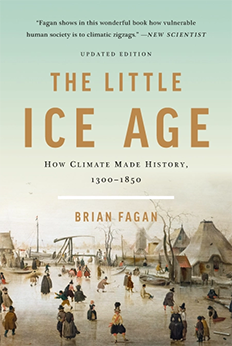
“1816’s growing season was fifty-five days shorter than the usual 155, in large part because of the Tambora eruption on the other side of the world.”
Christopher Columbus sailed to North America in 1492. Native Americans beat him by thousands of years. We know that. They most probably got there by crossing a land bridge that existed when global sea levels were significantly lower than they were today. They might have also taken boats. Either way, the only known route from the old world to the new was closed when sea levels rose and the isthmus between Eastern Russia and Alaska flooded for good. Columbus had to wait until the fifteenth century for European boat-building technology to be good enough and the world’s capacity for smug idiocy to be capacious enough to make the journey across the Atlantic. To the north, other Europeans made the trip several centuries earlier.
We know the Norse (the Vikings) made it to North America much earlier than Columbus. We know they briefly settled there. But I don’t think most of us burden ourselves with what happened next. I think I assumed they died out, like if Columbus had made it to the Caribbean but never made it back. But that’s not it — the Norse settlers communicated their discovery with their countrymen. And they kept returning even after the settlement failed. Something else killed the Norse’s will to go west. In The Little Ice Age, Brian Fagan suggests it may have been the climate.
The Little Ice Age wasn’t a real ice age. Sea levels didn’t plunge as massive amounts of water coalesced in ice caps and glaciers. The weather was cold, but inconsistently so. Overall, temperatures dropped, but hot summers weren’t unheard of and even occurred in streaks of multiple years at a time. Altogether, what we’re looking at is a period of a few hundred years when the earth was, for reasons we still struggle to completely comprehend, colder than it is now. Water levels didn’t fall enough to reopen the Native Americans’ Bering land bridge, but increased glacier and ice cover was enough to convince the Norse to abandon their westernmost settlements and to prevent them from coming back.
In Europe, Alpine glaciers surged forward, alternating between crushing homesteads as the cold provided the means for expansion and flooding valley settlements when warmth temporarily returned. London’s Thames river froze over so frequently and so reliably that the city’s people held seasonal fairs atop the ice, a coating so thick that one fair saw organizers lead elephants across it. Today’s London only rarely sees anything resembling a white Christmas, but they would have been the norm during the Little Ice Age. Coincidentally, one of the colder spells of the period saw the birth and childhood of Charles Dickens, a man we know for his Yuletide depictions of a particularly snowy London.
These are just some of the connections Fagan makes in his book. Others include the Irish Potato Famine and the Year Without Summer, a freak accident of climate caused by the intersection of the Little Ice Age with the most deadly volcanic eruption in written history. The ensuing year was depressing enough that a gathering of writers at Lord Byron’s vacation home in Geneva spawned a horror-writing contest that produced classics like Frankenstein.
The Little Ice Age stops short of suggesting that this prolonged climatic anomaly was the cause of some of the era’s most significant events, but it presents a compelling case for its heavy involvement in many of them. In laying out the nearly unbelievable toll of climate’s relatively recent ravages, Fagan also presents a strong case for our better custody of a climate that is again out of control, the fault this time being our own.
CASTE
by Isabel Wilkerson
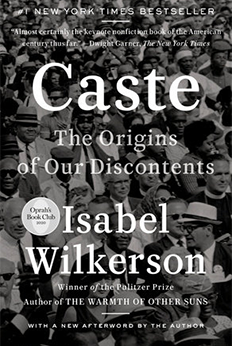
“Even the Nazis did not stoop to selling souvenirs of Auschwitz”
Two years ago, this space was occupied by The New Jim Crow, the premiere pop-science text on modern legal discrimination by lawyer and New York Times opinion columnist Michelle Alexander. Alexander started her book with a big allegation: that the structure of our modern criminal justice system is fraught with cracks, some incidental and others purpose-built, that together bend the whole system in such a way as to mimic the racist Jim Crow laws of the post-bellum south. I think even the most open-minded reader could be forgiven for taking that assertion as hyperbole, but over the course of the book, Alexander makes an incredibly compelling case, one that continues to paint my view of our justice system today.
In Caste: The Origins of Our Discontents, another former Times writer, Isabel Wilkerson, contends with a similarly-haughty and apparently-hyperbolic claim: that the position of Black Americans is not simply one of occasional racism and incidental discrimination, but instead more accurately read as a stratified caste system reminiscent of the historical social strata of India.
My education related to the Indian tradition of caste is fairly rudimentary and limited. I remember the subject being taught in school as a human innovation unique to the Indian subcontinent. Other places practiced discrimination, inter-group conflict, and hate, but the division of humans into a neatly-delineated and nearly-impermeable hierarchy was unique to South Asia. Comparing the history of Black Americans to that of the Indian untouchables seemed like a logical leap. But as Wilkerson begins to break apart the history and reality of Indian caste, as she details her discussions with Indian nationals from both the upper and lower castes, the differences start to fade, first slowly, and then much more quickly under a deluge of evidence.
Even as we try our best to understand the history of race and racism in America, a real unified thesis always seems out of reach. Resistance to the idea of an American caste system isn’t hard to understand, and alternative explanations do seem more immediately appealing. It’s easy for the most educated and socially-liberal Americans to see the position of their Black countrymen as an economic problem descending from the legacy of chattel slavery. But Wilkerson builds a case for a level of hatred and preference for apartheid that goes deeper. Black Americans were not simply unwanted, they were fundamentally inferior. They were not simply unwelcome, but individually disgusting. It was not simply legal apartheid that kept Black children out of public swimming pools; there was a real belief among White Americans that the presence of a single Black child could pollute the waters (of these common basins of urine and bacteria). Southern courtrooms kept two separate Bibles, one for White testifiers and one for Black; White Southerners were uncomfortable even coming into contact with the same holy book that a Black hand had touched. Anti-miscegenation laws aimed at keeping Black and White citizens from marrying made it to law books in 41 states. In Alabama, 40% of the state’s voters voted in favor of maintaining those laws. The year? 2000.
That sequence of sentences is one I find unendingly interesting. That’s just one paragraph, though. By the time I was a few chapters into Caste, the book started to feel like a browbeating. I don’t mean that as a criticism; throughout the text, Wilkerson’s evidence is as valid and necessary as ever. But by the time I was half-way through it all, I had started to feel bad about having ever doubted its core premise. Wilkerson doesn’t simply make the case for a caste system, she cements it, defining its every face while maintaining strong comparisons to similar systems through world history, from India’s enduring and well-known varna and jati castes to South African apartheid and the state of Europe’s Jewish people under Nazi rule and hegemony.
Caste isn’t a pleasant book. It unearths an uncomfortable truth of American history and undoes our best efforts to paint that truth as the mostly-rectified mistakes of long gone and faraway people. The preamble to the United States Constitution describes a national interest and belief in the pursuit of “a more perfect union”. In Caste: The Origin of Our Discontents, Isabel Wilkerson makes a strong case for the idea that, if that pursuit is to ever be made in earnest, we must first deal with our most present imperfection: our national cornerstone of institutional inequality.
THE LITTLE PRINCE
by Antoine de Saint-Exupéry
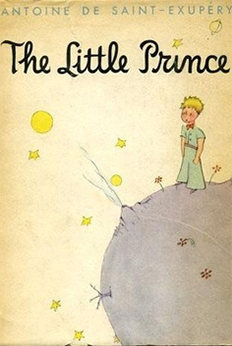
“Grown-ups never understand anything by themselves, and it is tiresome for children to be always and forever explaining things to them.”
I think you’ll find in reading these blurbs that I’m hurtling dangerously close to terminal overuse of the word “beautiful”. Unfortunately, my condition has no cure. The Little Prince is a beautiful book nearly unparalleled in its comic depiction of a child’s journey through space. In few pages, Antoine de Saint-Exupéry wages a joyful war on adulthood and, in doing so, tells an incredibly emotional story. The titular prince is unmatched in innocence, unraveling, through his misunderstandings and silly diversions, all that adulthood has to offer. His time with the author is short but revolutionary. We could all afford to spend a few hours of our own with him. We’d be better off for it.
DRUGS, WITHOUT THE HOT AIR
by David Nutt
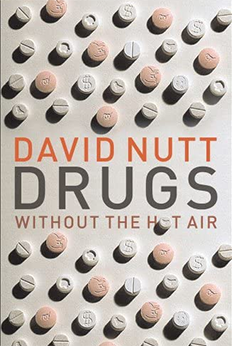
“We must base our laws on a realistic assessment of harm, not on irrelevant historical factors, nor on political cowardice about changing the status quo.”
Every red-blooded American child grows up hoping one day he can fight and die for his country in the war on drugs. For some, it’s a love of country, for others, it’s all about the paycheck. For me? It was vengeance. I lost my pappy just a month after he left for his third tour of duty. He took a joint to the knee. And they say marijuana doesn’t kill.
I find it hard to talk about drug policy sometimes. Prohibition is one of those debates, like circumcision, where you know one side is right, that they have all the evidence and justice on their side, and it’s even clearer that the other side is wronger than wrong. But then the good guys open their mouths and everything is ruined. No well-adjusted citizen fills his closet with anti-circumcision placards. And no one wants to forge a friendship with someone capable of talking your ear off about heroin legalization. In that way, Drugs, Without the Hot Air was written by a better man than me.
David Nutt is a British physician who was contracted by his government to put together and execute a wide, overarching study of the health risks posed by various drugs. When he and his team published the report they were brought together to make, they were promptly fired by the same government that had hired them. The results weren’t invalid. They hadn’t hacked a single p. The data just didn’t look the way the government wanted it to.
To citizens of the United States, the idea of national drug policy being incongruous with scientific consensus is unimaginable. We don’t need a team of fancy doctors to tell us which drugs are more harmful than others; the Senate’s done it for us. At the top of the list, the unimpeachably bad apples, the heroins, meths, and ketamines of the world. Right beside them, we’ve got urban crack cocaine. Regular cocaine furnishes the next rung of the ladder when consumed in public or in a private dwelling, but it’s several rungs lower when ingested at a swanky office party or on a dockside yacht. Then you have whatever new party drug made the local news last week, before we move onto the old school party drugs that we acknowledge are still dangerous but we’ve grown bored of, the ecstasies, speeds, and LSDs of the world. After that, there’s a gulf fifty rungs wide before we get to the “safe” drugs, the ones we’re allowed to have, like CBD skin cream and alcohol. Despite its innumerable benefits (helping you forget your marriage, topical anesthetic for unlicensed post-back alley gunfight surgery), alcohol has been banned by the government before, so it’s gonna have to take a hit in the ranking. It’s safe, but I’ll admit it could be safer; it could be a cigarette.
Early on in his book, Nutt disagrees with our government’s painstaking categorization of drugs. In his own team’s meta-analysis, he uncovers the shocking claim that it’s our beloved alcohol that tops the list of harmful drugs, a list bookended opposite by LSD, a known addict-slayer.
I’ve been really annoying slightly facetious so far. Drugs, Without the Hot Air places Nutt’s study at its core and from there builds a series of beyond-compelling arguments for the case that western drug policies and the prevailing war on drugs operate under a fundamental misunderstanding of drugs and have done far more to harm the people they mean to protect than levy any sort of protection.
That the war on drugs has been a failure probably doesn’t come as a shock to you or anyone you know. And everyone who’s ever been in contact with a person known to have ingested marijuana once in their life is acutely aware that there are drugs our government bans that aren’t nearly as dangerous as those that are allowed.
Nutt’s book goes further. Beyond simply alerting us to these concerns, he offers his own data for the measured harms of particular drugs (separated into user-imposed harms and harms levied upon others) and comes up with suggestions for how a more well-adjusted state could handle drugs and drug-related policy.
Digging beneath the trite repetitions we’ve all grown familiar with, Drugs, Without the Hot Air brings an appropriately fresh breeze to the discussion of drug law. It’s not just that our system is flawed; it’s nonsensical, completely broken. One of the government’s premier anti-drug programs, DARE, was labeled ineffective by the surgeon general in 2001. Why did I graduate from my school’s own DARE program, then, in 2006? I found a picture a few weeks ago of an 11-year-old me wearing it. You know the logo. You can see it today on the clothing of those who are actively doing drugs. That’s anecdotal, but it doesn’t need to be. Nutt cites evidence that suggests graduates of the DARE program may be more likely to try drugs.
DARE was finally discontinued a few years ago, but only to be replaced with an equivalent anti-drug program with less of an unsavory pre-built reputation. This is where our government’s addiction prevention budget goes, but Nutt points out that much more effective action could be taken for significantly less investment. For all we label marijuana a “gateway drug”, for example, we could do a lot of good by distancing ourselves from imprisoning marijuana users. “If anything, prison is the greatest gateway of all”, Nutt writes, questioning the choice of making stoners share prison cells with violent offenders. He points to the success of cannabis cafes in the Netherlands, which allow for safe access to the drug and take away the connection to the criminal underworld necessitated by going through dealers. Marijuana is the gateway to heroin in the same way that buying a bag of chips at Target is the gateway to owning an Xbox.
I could continue, and I’d like to. The book’s author spends chapters dissecting the way we look at drugs and making his best effort at replacing our archaic, draconian policies with those that are not only less harmful, but could carry positive effects for addicts, producers, and society at large. As it is, the drug economy under the influence of the war on drugs is a tsunami, wreaking havoc on all it touches, from the coca and opium planters in Colombia and Afghanistan to those living along the cartel corridors where drugs are trafficked to the end users in the inner city who find themselves locked in the cycle of addiction without a path to meaningful support. I’ll stop short of claiming Nutt has all the answers. But if we ever, as a nation, decide we’re getting tired of locking up marijuana users for no societal benefit, Drugs, Without the Hot Air, is a great blueprint for change.
Raisin d’Or: War and Peace
by Leo Tolstoy
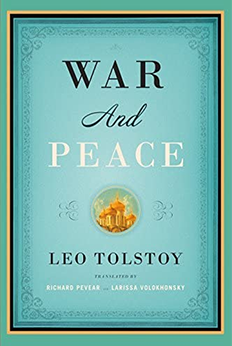
“If no one fought except on his own conviction, there would be no wars.”
“Greatness, it seems, excludes the standards of right and wrong. For the ‘great’ man nothing is wrong; there is no atrocity for which a ‘great’ man can be blamed.”
I did it again. You could’ve predicted it. Draw a line between my two previous Raisin d’Or winners (The Count of Monte Cristo and A Tale of Two Cities) and you’ll find it leads you here, to (what I hope is) the only remaining world-renowned piece of classic Napoleonic historical fiction. Let’s be clear: I’ll read an erotic fiction book written in a Sioux Falls auto body shop if L’empereur sneaks in for a few pages.
War and Peace is long. It’s old. And something like a quarter of it is written in French. Early on, author Leo Tolstoy introduces a lot of shithead Francophone Russian aristocrats over the course of very few pages. (Googling a family tree to save your sanity will have the opposite effect when you learn that the guy on Reddit who insists his chart is “spoiler free” is a massive dummy who included significant spoilers from the novel’s final hundred pages). Moreover, as he nears the end, Tolstoy kinda seems to forget that he’s writing a novel and takes it upon himself to step up on his soapbox and instead compose a direct polemic against war, Napoleon apologists, and anyone silly enough to overestimate the role of individual men in human societies.
…but in spite of all that, or maybe because of it, War and Peace deserves its accolades. Tolstoy is way ahead of his time here. He’s not the first guy to notice that war sucks, but he’s one of the first to describe just how it does, and so beautifully. The novel’s first pages were released in 1865, the same year that saw the conclusion of the American Civil War, a bloody conflict where Americans killed upwards of a million of their own countrymen. The book makes it into English in 1899, fifteen years before Europe will erupt in its deadliest conflict to date. Two decades later, they’ll do it again.
Tolstoy’s view is fairly unique for his time, as blithely pragmatic as it is cynical. He takes upon himself the unusual goal of not merely criticizing war but truly understanding it, of proffering his own sociological analysis. The players of Tolstoy’s story are victims neither of the aristocracy nor the military elite, but of humanity. For Tolstoy, from the first murmurs of revolution and the earliest thoughts of storming the Bastille, a string of events was set in motion in Paris that could have ended in no other way than the rise of Napoleon, the wars to follow, and the razing of Moscow. War for the individual is terrible and unnecessary, but war for the collective mass of men who participate is a natural outgrowth of their organization. Napoleon, in Tolstoy’s view, is neither a great man nor a great conqueror, but instead a man seated on a throne crafted, not by his own command, but by the natural ebb and flow of the society that raised him to it.
War and Peace is a novel in the old European style, one that places its aristocratic protagonists at its fore and deviates from them only rarely. There are a lot of balls and fancy parties. Court gossip features as strongly as military engagement. And you’ll spend more time wondering which thirty-year-old man gets to marry the eligible fifteen-year-old girl than attending to how the Russian Army will fare against the so-far inexorable will and onslaught of Napoleon. Tolstoy’s a cynic cut from the Russian tradition of cynicism. He inherits his era’s pastime of casual misogyny. But War and Peace‘s crowning achievement, beneath all the philosophy and criticism, is a timeless depiction of humans in times of war and times of peace. Tolstoy’s characters are rich and real, their conflicts relatable still today. It’s a more-than-worthy read, in all its thousand-plus pages.
Honorable Mentions
- Bad Blood by John Carreyrou
- Sikkim: Requiem for a Himalayan Kingdom by Andrew Duff
- Solutions and Other Problems by Allie Brosh
- Through the Language Glass by Guy Deutscher